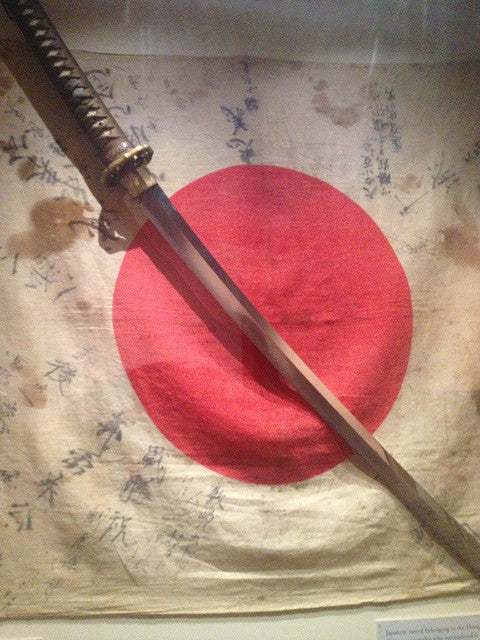Your Cart is Empty


The katana is one of the world's most recognized swords. Originating out of feudal Japan, it's characterized by a distinct single-edged, curved blade with a long grip to support two-handed wielding. Japanese swordsmiths invested a substantial amount of work and energy towards perfecting the katana, adding intricate features that often go unnoticed. One such feature is blood grooves, which we're going to discuss today.
Blood Grooves: The Basics
Also known as a fuller and blood gutters, blood grooves are a long and narrow indention that run the length of the katana through the middle of the blade. You can easily tell if a katana has blood grooves by inspecting the blade. The blood grooves are a single indention where the steel dips down in the middle.
The terms "blood grooves" and "blood gutters" is somewhat confusing, however. Whether used in a Japanese katana or any other bladed weapon, this indention doesn't have anything to do blood. Rather, it's used to lighten the blade.
Benefits of Using Blood Grooves
So, why were blood grooves a common feature in traditional Japanese katanas? Aside from the aesthetic benefits it offers, there's a very real, practical reason for its use. You see, blood grooves operate in the same manner as an I-beam: offering additional agility by lowering its total weight. Granted, making a small dip in the center of a katana may not seem like a substantial amount of reduced weight, but it can add up, especially when you consider that blood grooves run the entire length of the blade.
According to Wikipedia, blood grooves -- when combined with heat treatment and blade tempering methods -- can reduce a katana's weight by as much as 35%. Normally, methods used to reduce a sword's weight sacrifices strength. With blood grooves, however, the sword retains its original strength and stability. It's important to note, however, that the benefits of blood grooves diminishes as the blade is shortened (e.g. longer katanas benefit more from blood grooves than shorter katanas).
Different Types of Blood Grooves
The most common type of blood groove used in the Japanese katana is the bo-hi, which is a narrow indention that runs the length of the blade. But there are several other types of blood grooves used by Japanese swordsmiths. The futasuji-hi, for instance, features two narrow indentions that run the length of the blade. It's essentially the same as the bo-hi, but with two lines instead of one. The shobu-hi is another type of blood groove, and it's characterized by an indention in the shape of an iris plant leaf.
Photo credit: Adam Wiggins